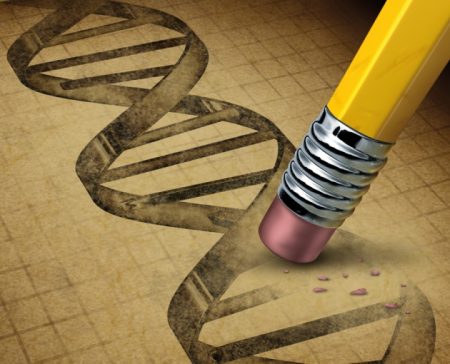
May 14, 2018 – The University of Pennsylvania is using altered immune cells to battle deadly cancers. New York University’s Langone Medical Center and Harvard Medical School researchers are proposing synthesizing human DNA with the potential to reinvent us. And a new therapy may reverse beta thalassemia sufferers and make it possible for any of us to make our own healthy blood cells.
What do all of these have in common?
Gene-editing.
We are living at the beginning of the age of genomics having invented new tools that allow medical researchers to modify human DNA and RNA.
In the University of Pennslyvania study, CRISPR is being used to modify the cells of our immune system to become expert at detecting and killing cancer. With 18 patients in the planned study, the technology will be used against multiple myeloma, sarcoma, and melanoma.
This is not the first clinical study using CRISPR. China has already attempted one. But it is the first to specifically tackle tumors by reprogramming an individual’s immune cells using CRISPR to delete two genes that cancer cells exploit. Instead of the genes, the researchers will engineer a receptor and place it within immune cells. The receptor is designed to sense danger from germs or sick tissue.
The work on the immune cells will be done externally with the modified cells then infused back into the patients.
Synthesizing the human genome from scratch is seen as controversial, but in today’s world of genomics, entirely doable. In Genome Project-Write researchers propose synthesizing the equivalent to human DNA,.manufacturing laboratory-generated genomes to give us the power to end genetically-acquired diseases as well as the means to remanufacture humanity.
The moral dilemma of this technology is pretty obvious. Suddenly we humans will have the means to take over the evolution of our species, from the smallest proteins present to the DNA and RNA that are the essence of us. Once we start doing this we can say goodbye to almost every disease humanity has faced.
And of course, what we can do for a human, we can also do for every plant and every animal on the planet.
But even more interesting in its potential is the technology would give the ability to refashion humans to live off the Earth. We could make ourselves radiation resistant to travel through space. We could make ourselves low-gravity, low-air-pressure tolerant. We could create Martians from humans.
And then there is using gene editing to modify DNA to reverse a genetic disorder. The specific condition in question is beta-thalassemia which affects about 288,000 people worldwide. This disease doesn’t allow the body to create sufficient hemoglobin.
With beta-thalassemia, patients must receive blood transfusions every few weeks from earliest detection. Each transfusion replaces the entire blood supply within the patient. A side effect of being transfused regularly like this is the building up of iron in the blood. And of course, having to have regular transfusions becomes costly over time.
So researchers extracted stem cells from patients’ bone marrow, modified the cells using a virus to insert a corrected gene to make hemoglobin, and then infused these cultured cells back into the patients’ bone marrow.
The end result, a therapy that effectively has cured 15 of the 22 patients in the clinical study, and reduced the symptoms in the remaining 7 leading to fewer blood transfusions.
If this therapy works for beta-thalassemia, then we should see other blood-based genetic diseases treated similarly. Sickle cell anemia immediately comes to mind.















